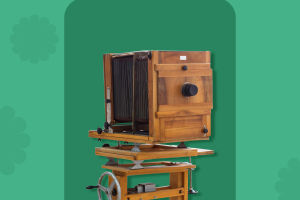The African Djembe is a representative instrument of the Manding culture in West Africa.
The Djembe is played with bare hands and has mainly low, medium and high notes, and it needs to be combined with the dunun (dun-dun drum).
The Djembe is played to accompany dancers and singers by playing drum songs related to specific life scenes.
Nowadays, Djembe has spread all over the world, playing its unique value in different fields of music and training.
Percussion instruments are probably the oldest musical instruments in the world.
The tambourine is the most representative percussion instrument, so it is also probably the oldest musical instrument in the world.
The hand drum originated from the Malian dynasty founded by the Manding people in the 13th century.
The earliest appearance dates back to 500 AD.
It was originally made by hand by blacksmiths.
It has an hourglass shape with two open ends, and the larger open end is wrapped with goat skin and played with both hands.
African drums are played with hand clapping, and the sound is different when the clapping part is different.
The drum can be used as a soloist or in ensembles with other traditional African instruments.
The main characteristic of African drum performance is its musical properties that can be widely used in special festivals, such as concerts, weddings, festivals and other essential songs.
Listening to African music with its rich rhythmic variations, you will experience a mysterious and special ethnic style!
The drum is a popular instrument in Black Africa and is also known as the soul of African traditional music.
The functions and uses of drums are diverse in Africa.
In addition to music, they are sometimes used as a symbol of a nation, tribe, or religion, or to convey various messages.
The drums are the so-called "talking drums".
African drums are unique in their own way, in terms of materials, shapes and playing techniques.
There are many ways to beat the drum, people use their fists, palms, and even their heels to beat the drum to create different sounds and effects.
There are also drums hammered, in the past, the use of ivory, and human bone as a drum hammers.
There is also a small stick rubbed with some kind of powder-sprayed drum skin and the sound of the rubbing drum.
In Nigeria, there is a snare drum played under the armpit, and the pitch of the drum can be changed at any time with the pressure of the arm on the skin of the drum.
In addition to being used to play music, African drums are also commonly used to convey messages and language.
Drummers use different strengths and hit different parts of the drum surface to produce a variety of different sounds.
The rhythms vary in intensity and form a variety of drum beats, which serve as sign language to transmit various messages.
In the early morning and late afternoon when it is quiet, the drums can reach 15 kilometers away, drummers repeated one after another, so that they can use the amazing speed of accurate transmission.
Locations up to 100 miles away can be reached in less than two hours.
In short, the most prominent and major factor in African music is rhythm, and the drum is the very basis of African music rhythm and one of the most important instruments for expressing musical language.
The importance of drums in the lives of African people is unparalleled by any other instrument.


